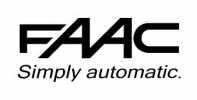Our Guide to Gate Safety
An automatic gate at a premises offers increased security, privacy and protection, so the safety of the property and its occupants isn’t compromised. With different materials, models and technologies available – such as keypad access, remote control and intercoms – there are a variety of options afforded to you. However, lack of awareness and knowledge around gate safety has led to incorrect use, improper installation or faulty products that can cause serious – and sometimes fatal – accidents.
To be deemed safe for use, automatic gates must pass European product safety and UK health and safety laws – however, the interpretation of these can lead to some confusion. It is better to be proactive than reactive, so familiarise yourself with the most important guidance with our guide to gate safety.
Gate Automation companies
By law, powered gate systems – including automatic gates – are considered to be machinery. Therefore, an automation company has a legal obligation to ensure that any new installations, upgrades or maintenance to an existing system is compliant with automated gate regulations, most specifically to the Machine Directive 2006/42/EC.
By doing so, this will also ensure that all non-domestic installations – such as those carried out at commercial and industrial premises – comply with the Health & Safety at Work Act 1974 and The Workplace (Health, Safety and Welfare) Regulations 1992.
Design and manufacturing
When it comes to the design and manufacture of automatic gates, there are several factors taken into consideration, including:
– Location
– Weather conditions
– Vulnerable users
– Risk of misuse
As such, a risk assessment carried out during the early stages will help to identify any hazards that may occur throughout the gate’s lifespan. Using this information, any risks can be addressed with the aim of being reduced or rectified. Where this is not possible, appropriate warnings and instructions must be supplied with the gate.
Manufacturers are responsible for making sure that the gate complies with the:
- Machinery Directive
- CE marking
- Declaration of Conformity
They must also produce the technical file (required for CE marked products in the EU) to show how the gate has been designed and manufactured to meet the Essential Health and Safety Requirements (EHSRs), along with detailed instructions for the user.
Gate installers
When it comes to the installation and maintenance of automatic gates, this work must be carried out by a competent engineer to ensure it is fully compliant. Under the Health and Safety at Work Act 1974, the installer has a duty to make sure the gate has been installed correctly and safely in accordance with this legislation – this also covers the safety devices, such as safety edges and manual emergency stop control.
When choosing a reputable gate installer, remember to check for accreditations and reviews – these can show the experience and knowledge a company has in its specialist field so you know exactly what to expect and feel reassured that you will be in safe hands.
Gate users
The aforementioned user instructions must give clear guidance on how to safely operate the gate in a way that is easy to understand. Users need to be aware of the safety considerations when using the gate so that any accidents – such as being hit by a moving gate, becoming caught in the mechanism or being electrocuted – can be mitigated.
For our team at Strand Systems, safety and compliance is the highest priority. With a wealth of industry experience and products from leading manufacturers including FAAC and Aprimatic, we pride ourselves on giving our customers the very best in electric and automatic gates. For advice or to find out more about our services covering London, Home Counties, Essex, Hertfordshire, Suffolk, Cambridgeshire and beyond, contact us today.







